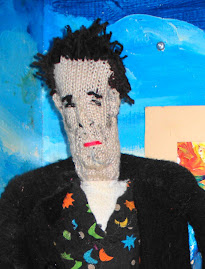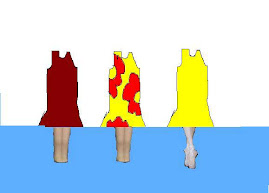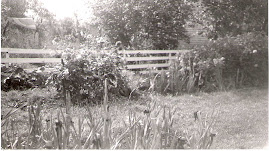 |
| Detail of: Arlene Stamp, Now Won’t You Listen Dearie, 1998, woven laminated inkjet prints 58.4 x 58.4 cm, Collection of Nickle Galleries, gift of the artist, photo: John Hails |
18 October, 2013 - 4 January, 2014
Organized from the collection of the Nickle Galleries,
curated by Christine Sowiak with assistance from Katie Green and catalogue essay by Chris Cran.
Nickle Galleries Floor, Taylor Family Digital Library, University of Calgary
Save and Retrieve, "Arlene Stamp: 1983+30 "
Arlene Stamp, painter (b at London, Ont 4 June 1938). Stamp studied art at the Alberta College of Art and Design (1974-76) and the UNIVERSITY OF CALGARY (BFA, 1979, and post-graduate studies from 1979-80). Previously she had studied mathematics at the UNIVERSITY OF WESTERN ONTARIO (BA, 1960). *1
While people that know Calgary based Arlene Stamp's work would argue that it has nothing to do with textiles they would be ignoring the obvious in her body of woven strips of laminated InkJet prints not to mention her manipulation of the grid. With “Arlene Stamp 1983 + 30” the Nickle Galleries at the University of Calgary has organized a retrospective of this artist work that, while inclusive of the different approaches to materials and methods of creating as is representative of their collection, for me this exhibition provides a small glimpse into her wide reaching conceptual thinking. Stamp came of age as an artist when there were many shifts in attitudes towards and in art making. It was an exciting, volatile and confusing time. Feminism was gaining ground. Many female artist were claiming that handicrafts : such as needle work, china painting and other “Decorative” arts along with weaving and quilting which were assumed /assigned to be woman's work, whether it was traditionally or not as an avenue of explorations. Just as many female artist where rejecting these handicrafts /mediums and expanding ways of approaching the pictorial surface and codify painting in order to reassert its position in a new hierarchy where conceptual work held primacy. Arlene Stamp's work is concerned with that pictorial plane/ surface.
 |
| Arlene Stamp, Plaza, 1991, vinyl tile on Masonite, 365.76 x 731.52 cm Collection of Nickle Galleries, gift of the artist, photo: courtesy of Arlene Stamp |
I first came across Arlene Stamps work in Toronto's corridor of power in one of the bank towers at Bay and King. “Binary Frieze (Squeeze)” and
“Bianary Frieze (Stretch)” are 1993 pieces
installed in the Ernst & Young Lobby, Toronto Dominion Centre, Toronto,
Ontario. They are made of vinyl tile on
aluminum. While many of the bank towers in this neighbourhood have had
tapestries hanging in their lobbies (as was the fashion of the era in which
these buildings where constructed), following the postwar “modern”
architectural movement which followed La Corbusier’s clarion call for
“tapestries to decorate the walls of the new architecture” (*2) Not wanting to be thought none modern Toronto
designers followed suit. Unfortunately with the renovations which the buildings in this neighbourhood have had in recent years many of the emblematic modern era tapestries have disappeared
from street level, public view including Binary Frieze (Stretch and Squeeze).
The retrospective includes two pieces constructed with vinyl tiles: JumpShift
1993, (wall piece) 152.76 X 248.92, vinyl tile, mahogany veneer, gator board
and aluminum stripping, and “Plaza” 1991, a floor piece 365.76 X 731.52, Vinyl
tile on Masonite which Stamp describes as
“ This series represents my first attempts to picture a
non-periodic pattern using real materials, in this case a line of standard
vinyl floor tiles. Two overlapping grids of tile patterns were set at an angle
of 13 degrees with respect to one another. Because this angle cuts the grids
into shapes with sides of an irrational * length, I thought the resulting
pattern could never repeat. While it does create a a complex and interesting
pattern, I now think I was wrong about it being non-periodic. (* an irrational
number in mathematics is represented by a decimal that goes on forever) “ (*3)
 |
| Arlene Stamp, Plato and My Garden II, 1990 oil and egg medium acryloid and graphite on canvas 24 panels each 45.7 x 45.7 cm Collection of Nickle Galleries, gift of the artist photo: John Hails |
Her interest in mathematics naturally/organically led to
working with digital technologies however there is work in the show that
explores none fine art reproduction technologies such as carbon paper, photo
copies and early/simple computerized graphic design software. These
explorations seem to be used in a counter intuitive manner which is very
interesting. Chris Cran in his catalogue essay writes about her use of Xeroxes
“...as a way of removing herself from the choices that a painter might always
be confronted with: subject matter, composition, colour etc. In this process
these formal components would be predetermined.” (*4) I see more going on then just what Chris
Cran describes above as these exploration continued over time and will look at what I see as her
attempts to remove herself from the making process., while still having her
work occur. The “Gladys M Johnson”
series which is based of Xerox images of a collection of paintings Chris Cran
own are copied in paint onto canvas by Stamp in the early 1980s In the beginning of 2000 she is revisiting
these images in the “lost Paintings” series by using a scanned slide of the
early work. In the first series I see her attempting to remove her hand
(unsuccessfully) from the making of these drawings and paintings as well as the
decision making process, in the latter series which were presented as “Paint By
Number” kits enabling/ allowing others to complete the works and possibly
secede in removing her hand from the finishing of what she calls “Impossible
Paintings.”
Interestingly in following this line of investigation she
was the curator of a show called “Painting Machines” (5*) for the New Gallery
in Calgary in 1997 where she presented the work a number of younger artist who
were making paintings through automated processes. They had each created or
modified machinery that place paint on the surface through the means of a brush
or spray. I had the luck to see the show and attend a panel discussion during
which they discussed their processes and the reasons behind them.
This way of using reproduction or information storage
technologies led to another thread of work which situated the hand implicitly
into the digital process. In some ways it is a very simplistic process where
she has transcribed interviews from audio tape, set the text over a multicoloured background and then printed these texts with an inkjet printer,
laminated them, cut them into strips, and then wove them in plain weave
structure. “The Mum Tapes” 1998 are part a body of work build on the
relationship between her mother and herself. The source material is archival
(old home movies and photographs) and collaboratively created audio recordings
of her mother reminiscences . Thinking about “The Mum Tapes” and its various
components and iterations the processes become part of the works, not in an
obvious way but in a subtle ways in which the deterioration of stored materials
not retrieved invalidate or perhaps fictionalize the information making it more
accessible. As her mother's voice is
recorded and played back the tapes themselves distort. The flow of the lamented
printed text ( Now You Won't Listen Dearie” and “A' You'er adorable” are in the
exhibition) is interrupted/ distorted by the interlacing of these strips. The
film strip “Real Life 58 Frames” an
enlarged 8 mm “home movies” backed with a electroluminescent light are safely
presented while the originals have suffered deterioration by being shown and,
like the audio tapes, will crumble. The web presentation of this material along
with images of lyrics of songs popular in her mother's youth in the work
“Modern Mother” (*6), all the original materials have been digitized / stored
in a “binary” format that is retrievable by current computer technologies but
their security depends on this technology which will be obsolete one day.
These steps through different storage and retrieval
systems are in many ways constantly in play throughout out all her works as is
the fact of this exhibition:
·
. As photocopies of source material (the Gladys
Johnson Series) and computer graphic design system enabled
·
the CMYK colour layers (The Red Paintings and
Plato and My Garden) removed decisions making from her painting process,
·
and audio visual recording and website creation
provided a way of moving captured/
created information (memory and object) from a physical to a “non-physical”
space.
·
And as lost photocopies led to the Impossible
Paintings series this exhibition is a result of accessing/ retrieving a whole
body of stored work.
Having stopped her studio practice in 2003, the organizing/ creating an inventory of her
entire body of work is a major achievement, as is finding a home (Storage and
Retrieval mechanism) for it through donating it to three
institutions in Alberta: the Nickle Galleries at the University of
Calgary, ( where Arlene Stamp 1983 +30 is on display)The Glenbow Museum in
Calgary and the Art Gallery of Alberta.
In so doing, she has “created” a final
work in which she has successfully removed her hand from the creation process.
Like the “impossible Painting" series,
it is some on else who has completed the work. In this case, it is , curator Christine
Sowiak with assistance from Katie Green.
Joe Lewis January 5 2014
_______________________________________________________
Notes
*1, the Canadian Encyclopedia http://www.thecanadianencyclopedia.com/en/article/arlene-stamp/
*2 “who Made That : a question about Public (Textile) Art
in Canada? By joe Lewis FQ Volume 3, Issue 1/ Winter 2007 and “Time and Line: brief history of Modern
Tapestry “ by Joe Lewis fQ Volume 5 Issue 3/ Fall 2009
*3 “Arlene Stamp 1983 +30' catalogue p.13
*4 “Arlene Stamp”
Chris Cran, “Arlene Stamp 1983 +30' catalogue p.4
*5 Painting Machine” New Gallery, Calgary Alberta 1997,
Heather Raymont, Jason Dufresne, Roy Meuwissen, Chris Bennett, Brian White,
Ayad Sinawi, John Eisler
*6 Modern Mother http://vanitygallery.com/stamp/











No comments:
Post a Comment